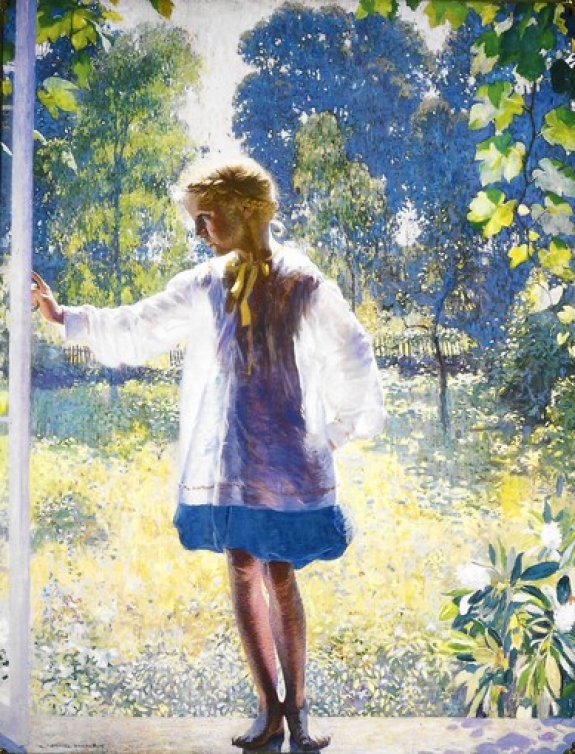"The Painterly Voice: Buck's County's Fertile Ground," at the James A. Michener Art Museum in Doylestown, is as unique an exhibit as the distinctly individualistic 19th- and 20th-century Bucks County artists it presents. For one thing, it is not really a single show, but an installation spanning three galleries and 25 sections, essentially giving each artist of significance a small solo exhibit. For another, it represents the personal vision of its curator as few other exhibits do, from its unique hierarchy to its unconventional wall text that reads like a casual conversation with a close, knowledgeable friend.
Running through April 1, "The Painterly Voice" is by far the biggest show the Michener Museum has ever staged, with more than 200 paintings by 50 artists drawn from over 35 sources, including private collectors and institutions. The works range from iconic works such as Edward Hicks' "The Peaceable Kingdom," one of the most beloved images in the history of American art, on loan from the Philadelphia Museum of Art, to rarely seen gems from private collections.
Most likely, it is the largest exhibit of Pennsylvania Impressionist works in recent history. Possibly the 1915 Panama-Pacific Exposition in San Francisco came close to it in quantity, but never before has there been such a concentration of such quality paintings from Bucks County artists in a single exhibition.
It is notable that the title of the show blatantly turns its back on the phrase "Pennsylvania Impressionism." For chief curator Brian Peterson, those words are fine as far as identifying the group of Bucks County painters associated with the New Hope art colony.
Certainly the bulk of these works are landscapes, although figure paintings are well represented. But as to the implication of a collective style? "For years I've tried to find that unified Pennsylvania Impressionist style, and for years it has eluded me," Peterson says.
The search for an artist's individual soul has been Peterson's holy grail for his entire career, so it makes sense the exhibit is organized around individuals, not "isms." "While many curators love to think up inventive and insightful themes, I've always been more interested in the artist as individual — not the rugged loner saving art one picture at a time, but the connected individual, the individual who is nourished by a community," he says. Peterson does allow for one or two themes, however. There's an entire section, for example, devoted to Modernism.
"The Painterly Voice" is exceptional not only in its sheer volume, but also in the intensity with which it represents individual artists. "There's a difference in showing one work by an artist versus eight or nine works. When you multiply that by 50 artists, then there's a real weight to it," Peterson says. "I'm trying to show people that what I've learned over all these years is the sense of substance of this group of painters, and give them a chance to shine better than ever before."
Indeed, to view nine big, juicy Edward Redfield plein air works on a single wall, their pigment laid on thick in frantic pleasure with gobs and drips, is a sensual experience. Adjacent to Redfield's territory are separate subdivisions for Morgan Colt, Walter Schofield and Walter Baum, who share similar extroverted orbits.
In stark contrast are William Lathrop's paintings, whose deliberate, fine brushwork is executed in a more somber, moodier palette. So important was Lathrop in engendering the New Hope art colony that Peterson selected his imposing portrait, painted by Daniel Garber, as the first painting visitors see when entering the exhibit.



